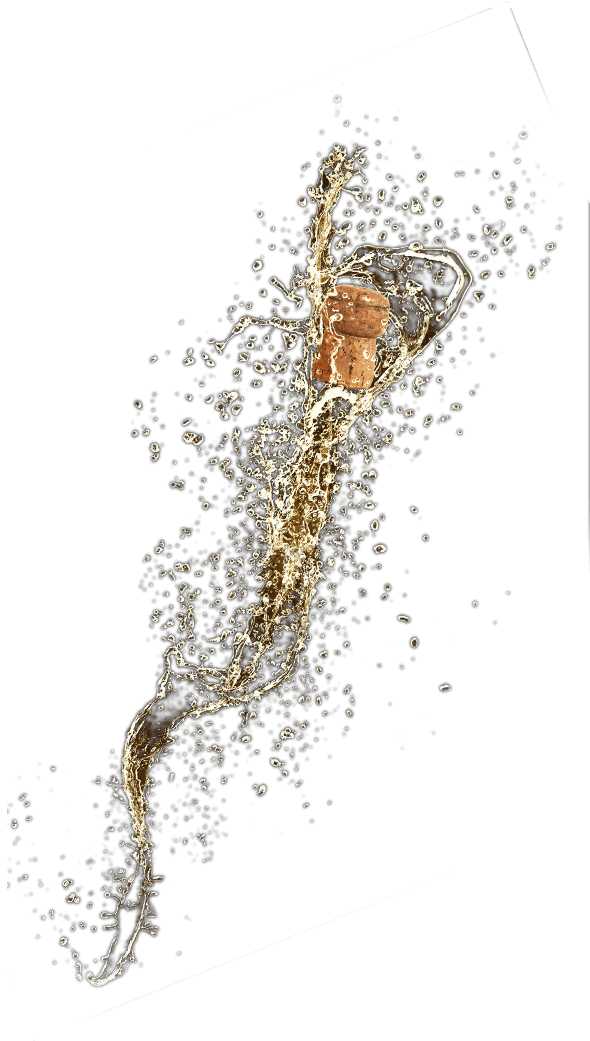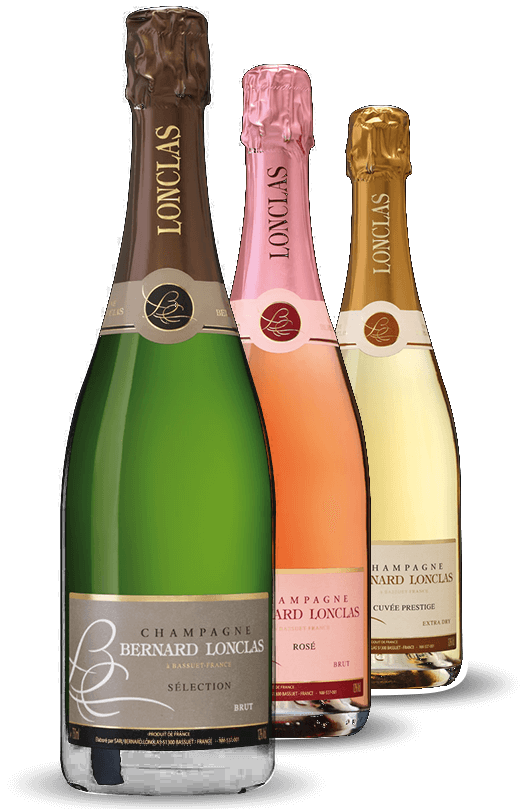Making
Champagne

Harvesting
Harvesting usually takes place 90 days after flowering, often during the second half of September. Depending on the year, the INAO (Institut National des Appellations d'Origine) sets the number of kilos of grapes per hectare entitled to the appellation.
Harvesting has to be done by hand in the Champagne region, and Maison Lonclas employs 25 seasonal workers for a period of 9 to 10 days. Once the grapes have been picked, they are taken directly to the press in small crates (maximum 50 kilos) to prevent them from being damaged by the weight of other bunches of grapes during the trip.
Pressing
Pressing is done as close as possible to the site where the grapes were picked (all the Estate’s vines are within 10 Km) so that juice is not lost on the way. The harvest then weighs in to form the marc of 4,000 kilos of grapes. It is then loaded onto both of two vertical wooden presses that are very specific traditional presses or into “Coquard" presses approved by the Interprofessional Committee of Champagne Wines (CIVC). They ensure the grapes’ non traumatic pneumatic pressing. From the 4,000 kilos of grapes, 2,550 litres of grape juice or must are extracted. The first 2,050 litres obtained make up the cuvee and the final 500 litres the “taille” or “tail”.
Blending
Blending, the next, essential step, takes place a few months after harvesting. It is a crucial and very delicate time for champagne making. After several tastings with Aurélie and Bernard Lonclas and their technicians, the blends of different cuvees and reserve wines are decided upon to guarantee the consistent quality and that Bernard Lonclas taste.
Blending can be between different vintages and different grape varieties. Our vineyard is made up of 85% of the ‘noble variety’ of Chardonnay, 10% Pinot Meunier and 5% Pinot Noir.
Racking
Racking, also known as drawing off, cannot take place before the first of January after the harvest. The wine is “drawn off” (tiré), as we say in the Champagne region, and bottled with the addition of sugar (22 grams per litre) and yeasts to activate the second fermentation. The bottles are then taken down to the cellars and stacked horizontally on “racks” (sur lattes).
The minimum duration of ageing in bottles required by Champagne regulations is 15 months for a non-vintage champagne and 3 years for a vintage champagne.
Riddling
At the end of this period of rest, a sediment forms in the bottle (dead yeasts). To be removed, it has to be slipped whole into the neck of the bottle.
Slipping the sediment or lees is done by “riddling” by hand. Bottles are placed on traditional riddling tables and Bernard Lonclas turns them and tips them every day for at least 4 weeks.
Disgorging
In order to extract the sediment or lees, the wine must be disgorged. This technical stage, which used to be done by hand, consists of freezing the sediment by placing the bottles neck-down in a tub of ice and then disgorging (uncapping) them and removing the iced sediment by means of the pressure obtained inside the bottle (6 bars).
Once this operation has been carried out, the bottles are dosed with different amounts of “liqueur d'expédition” meticulously prepared by the champagne maker to obtain different qualities of champagne – “Brut", "Extra Dry", "Demi-sec", etc. They are then tasted, corked and labelled, ready to be marketed and complete their journey on your table.

